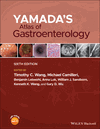Diverticular disease of the colon
Summary
This chapter offers diverse images that provide an overview on diverticular disease of the colon and aims to provide a synopsis through pictures and illustrations rather than through text. Diverticular disease is the terminology used to describe asymptomatic diverticulosis, an often incidental finding. Clinical manifestations of diverticulosis include acute uncomplicated diverticulitis, symptomatic uncomplicated diverticular disease, segmental colitis associated with diverticulosis, and diverticular bleeding. Several factors contribute to the pathogenesis of diverticular disease, including structural and functional changes in the connective tissue, colonic motility with more phasic contractions, and alternations in the enteric nervous system with decreased neural density and increased fibrosis in the myenteric plexus. The diagnosis of diverticular disease usually requires endoscopic and radiological modalities, with computed tomography being the standard of care for the diagnosis.



